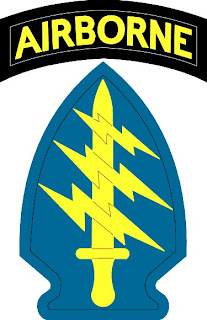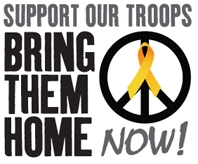Afpak vs. Pacification

Between the idea
And the reality
Falls the Shadow
--The Hollow Men, T.S. Eliot
The soldier, arm'd with sword and gun
Palsied strikes the summer's sun
The poor man's farthing is worth more
Than all the gold on Afric's shore
--Auguries of Innocence, William Blake
I had a brother at Khe Sahn
fighting off the Viet Cong
They're still there, he's all gone
--Born in the U.S.A., Bruce Springsteen
________________
And the reality
Falls the Shadow
--The Hollow Men, T.S. Eliot
The soldier, arm'd with sword and gun
Palsied strikes the summer's sun
The poor man's farthing is worth more
Than all the gold on Afric's shore
--Auguries of Innocence, William Blake
I had a brother at Khe Sahn
fighting off the Viet Cong
They're still there, he's all gone
--Born in the U.S.A., Bruce Springsteen
________________
Global Post's second installment on the Vietnam - Afghanistan analogy merits comment (The Pitfalls of Pacification).
We throw words around in the Phony War on Terror (PWOT ©) and do not stop to consider their Orwellian implications. Take for example, pacification, from pace (L): peace.
Relocating unwilling villagers to guarded villages as in the Strategic Hamlet program in Vietnam was anything but peaceful, but we called it "pacification". This forced relocation is actually a provocation; it gets people's asses up on their shoulders, and is the portal for more violence.
In Counterinsurgency and pacification, the question should always be: Why is the policy being instituted, and what benefit will accrue from it?
To call enforced relocation pacification inverts the meaning of words. Said relocation puts the guerrilla talent pool in little concentration camps, making it easier for government forces to control their actions. This includes ambushing all avenues of approach and killing anything that moves through the night around the village.
Since ARVN forces were averse to doing night ambushes, this action usually devolved to U.S. combat forces. And once enough of the village was killed, they could then be viewed as pacified. The same yardstick is being applied in Afghanistan.
Steinglass says Special Envoy Richard Holbrooke faces "many of the same problems" in Afghanistan that he faced at the beginning of his career in Vietnam. The problems include the people not liking the American invaders. Even though they may not like the Talibs (Vietcong), they like the U.S. occupation even less, a problem that will never be solved through use of arms.
The more combat pressure the U.S. applies, the stronger the counter-pressure from the local inhabitants. In Vietnam, not all VC were Communists, and today, not Afghan insurgents are Taliban or al-Qaeda.
The "problems" should be countenanced as assumptions in the planning stage before the U.S. enters a country. This is traditionally achieved through a U.S. Special Forces collaboration with the State Department, called an Area Study. Where are the Area Studies for Iraq and Afghanistan? Invading a country sans an Area Study = going cross country without a road map (forget GPS).
One of those relocated, Cai Van Minh, 56, "recalls the terror of random shelling by South Vietnamese artillery every night, which was an ineffectual attempt to harass Viet Cong troops. The shelling only added to the population’s antagonism. Although the strategic hamlets were supposed to protect the peasants from the Viet Cong, they were actually driving even more of them to support the communists."
Interesting the writer calls the VC "troops". The VC were generally indigenous fighters leading dual lives. They were not troops in the traditional sense but were clearly insurgents/guerrillas operating as the tactical situation demanded, as auxiliary in the fight versus the U.S.-backed ARVN forces.
But this does not raise them to the level of troops, an idea which also applies to the Taliban insurgents of Afghanistan. So, why are they willing to die in such a ready manner? Because it is their country and their way of life which they are defending. This should resonate with any self-respecting American.
"The fact that the strategic hamlets program failed does not mean it was poor counterinsurgency theory." But theory and reality are different things. COIN doesn't work because the everyday lives of VN/Afghan indigenous do not roll into a neat theory to be achieved via military action.
For example, the theory is that the U.S. fights insurgencies to help the people to be free, but the reality is far from that. Achieving elections does not = democracy, and neither the VN nor the Afghan government are democratic institutions.
Forcing democracies down people's gullets is not liberalism in action; it is tyranny. This basic fact -- the bedrock of COIN -- insures a violent counter-reaction from the populace. This is Ground-Zero!
"According to military historian Nguyen Huu Nguyen, a colonel in the North Vietnamese Army (NVA) who fought in the South from 1965 to 1975, the strategic hamlets program was a good idea. In fact, the goal it sought to achieve was crucial: “population control,” as it is called in the new 2007 U.S. Army Counterinsurgency Field Manual, co-authored by Gen. David Petraeus. It is the same goal that Petraeus pursued in Baghdad by walling off ethnically homogenous neighborhoods and instituting curfews and checkpoints."
The two situations are dissimilar save for the U.S. is generally arrayed and hostile against Sunni movements. Population control is the only essential part of the strategy. In the 60's, this was called PRC (Population and resource Control), a component of IDAD (Internal Defense and Development). This has morphed into nation building.
Controlling the population is surely a COIN priority as it denies recruitment, intelligence and billeting to the insurgents. Most importantly, it denies them access to the population's food. Since the people are farmers, this is the major source of rations for insurgents. The formula is simple: deny the insurgents access to the people and you concomitantly deny them access to their food.
Now this is theory, since there are several types of insurgent movements. This formula applies only to internal insurgent movements, which RVN and Afghanistan do not classically fit. Neither are 1950's Malaya and U.S. forces can neither isolate the people nor the battlefield.
This concept also ignores black markets which always spring up around U.S. bases and thrive on buying and selling any manner of items including rations, weapons, munitions, clothing and medical supplies. Another commodity is the sex trade that provides intel and money for indigenous movements.
"But in Vietnam, it didn’t work. Corrupt government administrators stole funds meant for construction and social programs. To generate positive statistics, the government expanded the program too fast — when Holbrooke arrived in the Mekong Delta, he found many of the hamlets in his province existed only on paper. The government lacked troops to defend them."
The government was defending the strategic hamlets, but as soon as government troops disappeared, so did the hamlet's involuntary residents. They slipped back to their ancestral homes, and the VC understood and exploited this peasant behavior; the U.S. never seemed to grasp it.
"Many analysts have criticized the U.S. for misapplying old solutions, fighting in Vietnam as if it were Korea, Malaya or the Philippines rather than adapting to local realities. The new counterinsurgency manual tries to avoid such mistakes. Planners in Afghanistan will not simply replicate techniques from Vietnam or Iraq. They will recognize that the goals, actors, resources and constraints in Afghanistan are different. And they will employ an iterative process, testing out new techniques, discarding failures and adopting successes."
The U.S. does not adopt successful tactics, but instead, what passes as success. Long-term COIN strategy is often derailed by tactical folly such as "force relocation", defoliation or poppy eradication.
Poppy eradication will not hurt al-Qaeda or the Talibs since they have sources of revenue independent of drug money. Eradication only adds to the hatred directed the the U.S.-led coalition imposing external standards upon insular societies. In fact, such programs confuse the issue: Are U.S. forces there to fight drugs, the Taliban or al-Qaeda? They can't do it all.
When considering any success, one must ask, "To what end?" How does a phony matrix of COIN success equate to anything of value for the U.S. taxpayer funding the enterprise? What are we getting in the quid pro quo of the marketplace?
Provincial Reconstruction Teams in CORD/RVN were synergistic and fully coordinated with the State Department and host nation requirements. Is the same true of the PRT's in Afghanistan, which appear to be fully U.S. military in nature? What is the makeup and experience level of these PRT's? What do they accomplish in Afghanistan?
"The CIA, meanwhile, understood that a sophisticated social and political view of the conflict required an attempt to dismantle the Viet Cong’s shadow government, and set up the “Phoenix” program to gather intelligence and promote defections, arrests and assassinations of Viet Cong officials. Experts at USAID, RAND, the State Department and elsewhere saw the need for land reform to draw impoverished poor peasants away from the communists, and finally convinced the Vietnamese government to adopt a law that redistributed land from wealthy landowners to poor farmers. And this is just a partial list of efforts to combat the war's social underpinnings."
The corruption of COIN can be most easily seen in programs like Phoenix, in which assassination became the major tool of U.S. policy. The words assassination and democracy do not fit, and together spell out one word: FAILURE. When the U.S resorts to state-sanctioned assassination and torture, the war is lost. We lose the moral high ground, and are no longer on the right side of the fence.
Sending 300 more State Department civilians to Afghanistan is irrelevant. After seven years of war, what will these personnel achieve? What skill sets will they apply to the operation? Moreover, who determines the priorities?
The U.S. new New Afpak policy focuses on integrating the sociopolitical and military elements of counterinsurgency. But when introducing the Afghanistan strategy to NATO officials, "Holbrooke said that simply spending a lot of money on aid does not guarantee results."
This is the key issue -- what are the results required from our effort in Afghanistan? The focus appears to be COIN, when in fact we are supposed to be there fighting terror aimed at the heart of America. So how is that threat being addressed by continuing the Afghan occupation?
Why does U.S. policy care if there is an insurgency in Afghanistan? The only concern should be terrorism currently aimed at America reemerging or developing as a collateral issue.
U.S. efforts should focus on this primary mission. The rest is diversionary and wasted effort that we can ill-afford.
Labels: afghanistan, COIN, COIN lies, counterinsurgency, Phoenix, phony war on terror, PWOT, taliban





7 Comments:
this is some brilliant stuff ranger. it touches on many of the critical things that went wrong and are going wrong.
it really got summed up perfectly by a comic, i forget which one, who said, when angelina jolie adopted a vietnamese orphan recently:
and in 30 years she's going to adopt an iraqi kid and make all the same mistakes.too many of the "lessons" that were learned in vietnam were ideas of labeling, or propaganda.
too much transperancy, not enough contol of the "message."
not enough secrecy. i still hear that one.
stuff like operation phoenix was not a secret to anybody in the central highlands, laos, or cambodia. we were doing it to them, they knew. operation phoenix was a secret from my mom. it was a secret from the american people.
after my lai broke, they hushed it up good didn't they? after that, the best thing was to say nothing at all about atrocity. sure, they were happening, but nobody wanted to hear. some folks who pressed the issues were bought off, others bullied off.
all the window dressing in the blue eyed world won't hide the fact that we went to war, half a world away, for reasons that were never fully, or openly explained.
now, they've done it again.
we've allowed our morality and sense of honor to become so sullied and twisted that we appear to have decided that kidnapping someone off the street, holding them without charge or representation or any rights at all in a secret location and beating them to death is something that can happen under our law.
but don't, for the sake of god almighty, do like john edwards. paying off your mistress to shut up so that you can run for president is a federal fucking crime.
Right On, the wheel of history just goes on without any one in power checking on if it has white walls this time or raised red lettering. I don't think the brain trust (used lightly) will get it right this time. Just get the girls and boy out of harms way, you can't win when fighting Minute Men.
jo6pac
Your comments on Phoenix are ill-informed. First of all, the program only existed in Vietnam (not Laos and Cambodia). Second, the goal of the program was to capture members of the infrastructure so that intelligence could be gained from them. Yes, it was imperfect, and yes, people did end up dead. I'd recommend you read Stu Herrington's book. It's a far more realistic view. Also, your view of the ARVN's is likewise simplistic. I advised CODG units, often on night ambushes, and occasionally we ran into ARVNs or RF/PFs. On one occasion, we triggered an ambush on a RF/PF patrol that had gone outside its boundary in pursuit of a VC element. Tragic mistake, it cost the life of the RF/PF BAR gunner.
Anon,
Please ref. the source article in Global Post (link provided). Ranger made no comment on Phoenix's AO, and merely stated that assassination is counter to the tenets of democracy.
The assassination aspect of the Phoenix program has been well-documented.
Anon,
I'm assuming this CODG to be a typo.
My knowledge of Phoenix is long term since i knew a few of their operatives. In fact one lives in my home town of Quincey, fl. BTW- his reward for his service was a RIF letter back in the early 70's- just an aside here.
Any program that is run on foreign provided intel is suspect in my book. Nothing to include torture will ever change this long held
belief.
I reckon that if we killed every communist and all supporters we could've won in VN. It's a shame we let them take over their own country.
I will say that my statement on Marvin was overly broad , every unit was different as you point out. I am not a fan of rfpf type forces since they often serve as a source of training and equipment for insurgents.
Thanks for your letter, it was instructive hearing from you and i respect your viewpoint.
jim
Jim, thanks for the reply. And it was a typo for CIDG. Lisa, "well documented"? You mean lots of accusations and comments by those well up the chain of command made during various congressional hearings? Sorry, politics. Perhaps you should read Stu Herrington's book. For the record, I am against torture, and so was Herrington. His concern was getting to captured NVA before the ARVN's tossed them into the POW compound, where mistreatment was the rule. Understand, when you go into a hamlet with a team of armed men to take down an armed member of the infrastructure, chances of a firefight are high. I accompanied one such mission in Pleiku province in 1968 with elements from a PRU, and the undercover SF E-6 running the unit definitely wanted a capture.
Jim, some points about Vietnam that I only learned through long study and reflection, not to mention numerous trips into country with my wife, and I speak basic Vietnamese. First, as to "letting them take over their own country". I will agree that it was theirs to win or lose in the first place, and the side we supported lost. If only for the sake of 58,000 dead US, we should have sent the Air Force in in 1975. The ARVNs had stood up to the NVA in 1972. But the amount of NVA armor and mech infantry in 72 was much smaller in scale than 75's. Note that there was no guerrilla Army in 75, and no NLF exists today. Indeed, no one argues any more about the alleged viability of the NLF as an entity independent of the NVA. They were a fiction. My wife has not a few relatives who were VC, but only one was a communist. She became a member of the infrastructure in the Delta after the Diem government executed her husband (who had been a member of the Party since the 50's). She told me that if she had known what was going to happen after "liberation" at the time her husband was executed, she'd have supported the Diem government anyway. I do not fault Gerald Ford for doing what he did, because he was a decent man who recognized the unusual circumstances that placed him in the Presidency, and sought to represent all Americans. We had as much right to be in Vietnam arming and advising the RVN as the Chinese and Russians did arming and advising the DRVN. Both were internationally recognized states, and as such had the right to enter into alliances. Ho Chi Minh had as much right to forcibly take over the South as Adolf Hitler did taking over Austria and various other German settled pieces of Europe. Both claimed to be nationalists, but in Ho's case, his nationalism was viewed as a necessary step to that bright Communist future. By the way, Vietnam had been divided from the 1500s until 1801 (or 03) when Gia Long reunited the country (from the South). It had been recognized as such under the name "Nguyen Dang Trong" by the Chinese Empire in 1744 (Li Tana "Nguyen Cochinchina"). So its partition was hardly unusual. The Central and South was much like the American West, taken from others by encroachment and occasionally conquest. Thus Champa ceased to exist, Prei Nokor became Saigon. And the Cambodians living in their own Mekong Delta (Khmer Kampuchea Krom) were soon outnumbered by ethnic Vietnamese settlers.
Anyway, my two cents. I dislike the Anonymous part, but it fails to recognize my password. Oh, and I got riffed in '72, along with thousands of others. Necessary in any post-war drawdown, however much it hurt. I did go on to Law School and returned to finish my career in SF, before retiring to take up a job as a CT analyst with JSOC, then overseas until my retirement.
Shaun Darragh
Shaun,
It's a pleasure to talk with you. We are basically in agreement, but not totally, but that's the beauty of America.
I'll try to access the book you recommend.
Maybe we should have bombed, but to what end? Even the POTUS knew it was a losing war after 1968, yet good men continued to die on both sides.
I believe TET 68 was a cynical NVA tactic to kill off the VC/NLF to facilitate NVA post war hegemony. You are right -- there was a lot of blame to be spread around, to inc. Russia and China.
The key Nixon initiative was busting up the Russia-China blok.
And yes, what we derogatorily called the VC was a multifaceted critter.
As for NV and SVN being sovereign nations, that is not technically correct. The Geneva Accords created two zones that were to vote on reunification in 1956. The South VN with US contrivance short-circuited this part of the agreement. In fact the agreements dictated that neither section enter into foreign alliances and the South joined SEATO in defiance of this fact.
The timing of the NVN alliances / linkages with China and Russia are not known to me. But I'm not so naive as to believe that they weren't also playing the same game, except in secret. Both sides were double-dealing.
I'm writing further on this topic of Wanat, and would welcome your insight.
P.s.-- I'd be interested in your analysis of the present al-Qaeda threat to the U.S
Post a Comment
<< Home